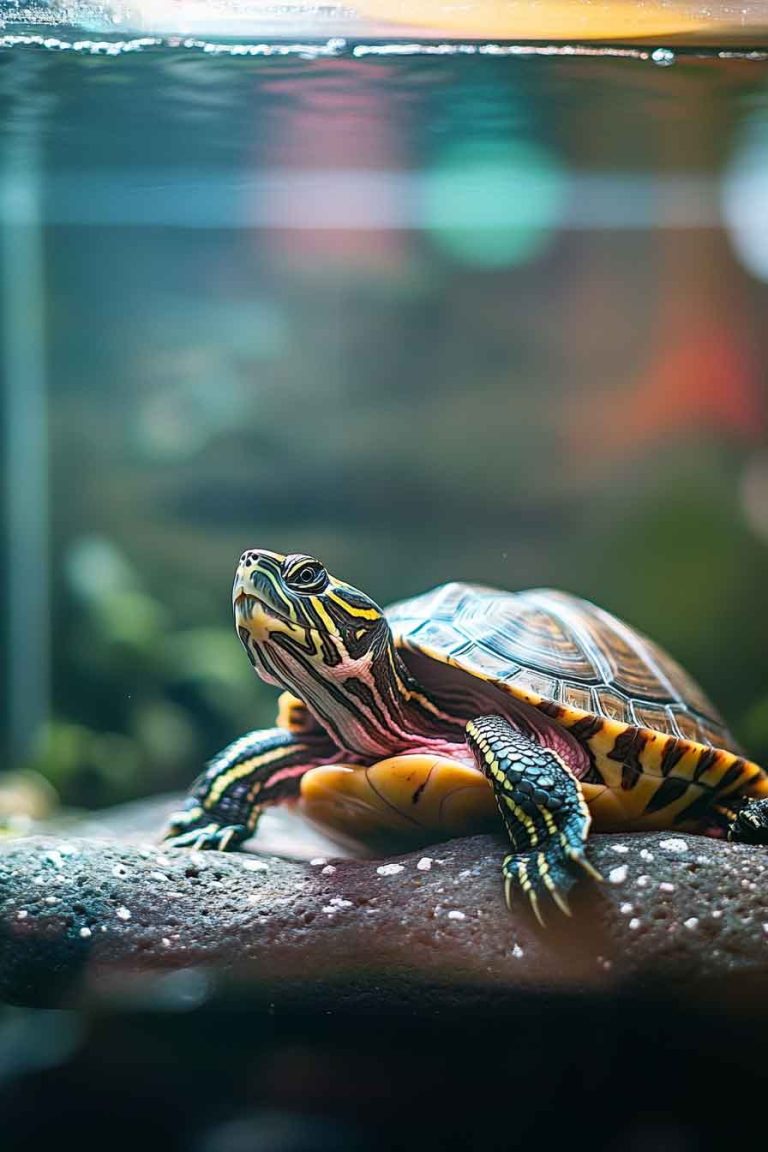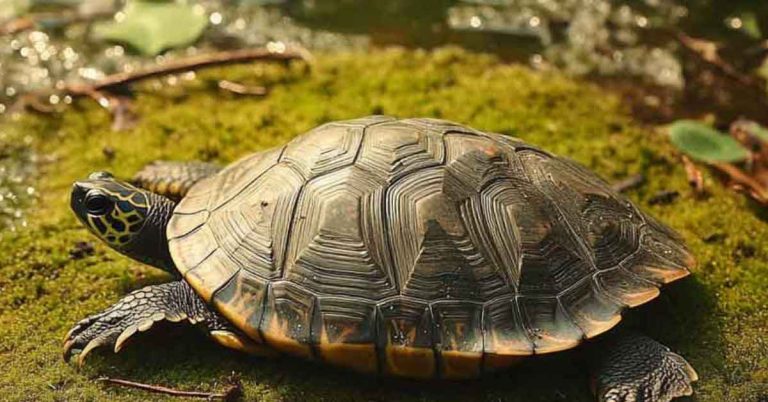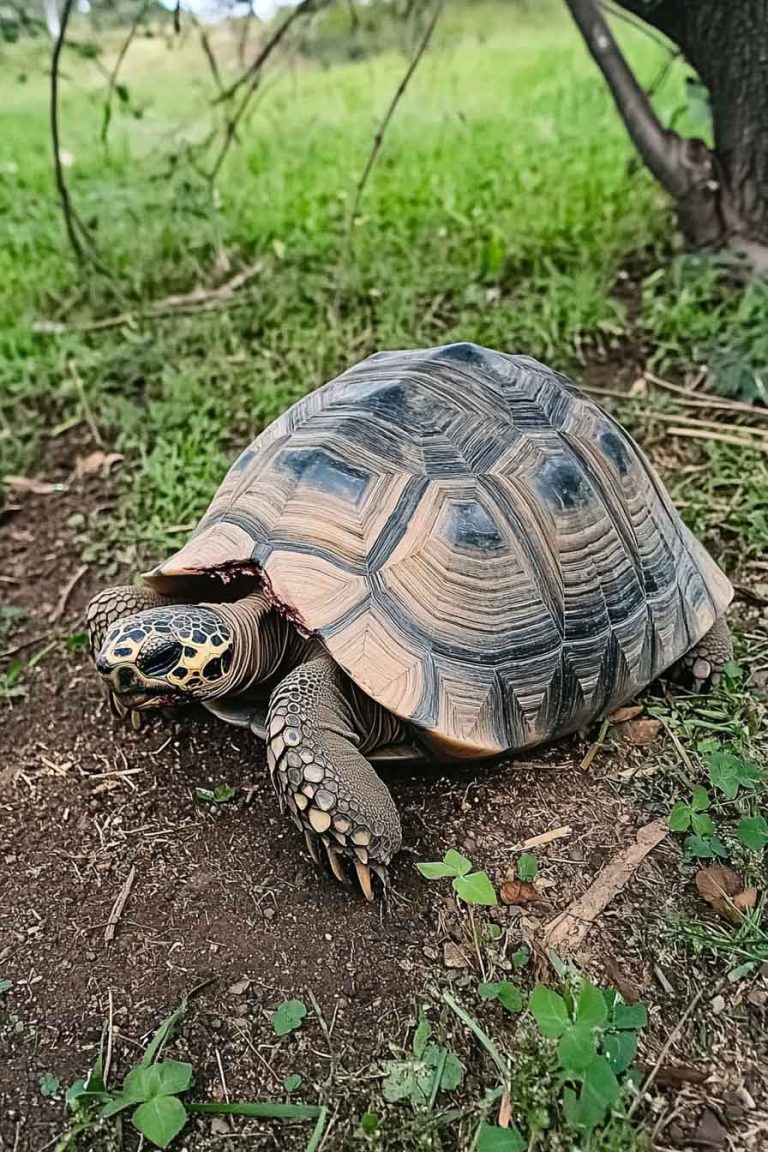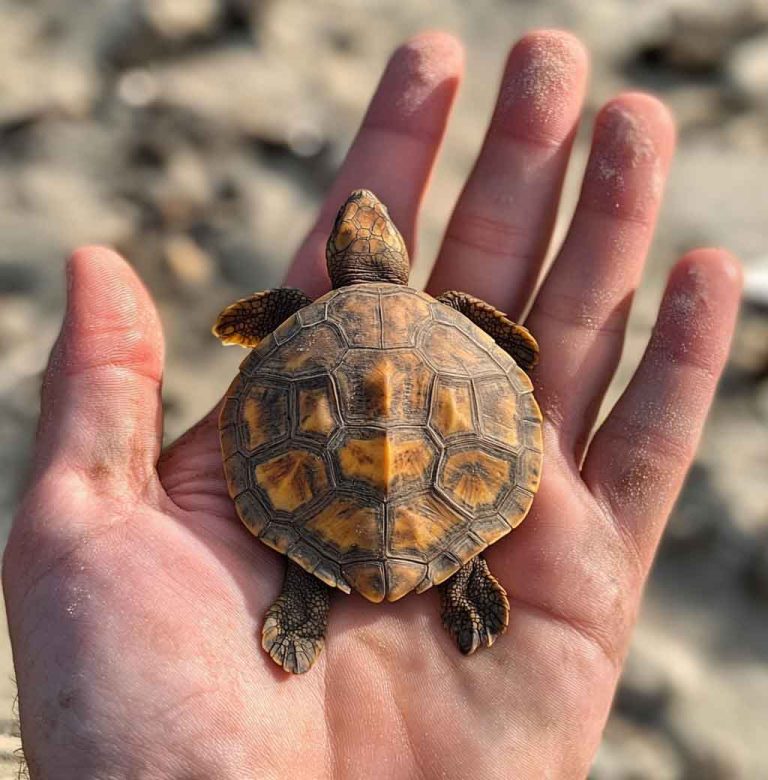How to Tell a Turtle’s Age: Simple Signs & Expert Tips to Estimate Turtle Age
Have you ever looked at your turtle and thought, “Just how old are you, buddy?”I sure have — many times. Whether you’ve rescued a turtle from the wild, adopted one from someone else, or picked one up at a pet store without much history, not knowing its age can leave you guessing. So, is there…
Have you ever looked at your turtle and thought, “Just how old are you, buddy?”
I sure have — many times. Whether you’ve rescued a turtle from the wild, adopted one from someone else, or picked one up at a pet store without much history, not knowing its age can leave you guessing.
So, is there a way to tell a turtle’s age? Yes and no.
There’s no exact science unless you’ve known your turtle since it hatched. But over the years, I’ve learned to spot certain clues — physical traits, size, shell wear, and behavior — that can help you make a solid estimate.
In this article, I’ll walk you through everything I’ve personally used to age my turtles — and what I’ve learned from other keepers, breeders, and even wildlife rehabbers along the way. Whether your turtle’s a fresh little hatchling or a slow-moving old-timer, this guide will help you get a clearer picture.
Can You Tell a Turtle’s Age by Its Shell?
Sort of — but it’s not foolproof.
Most people (me included, when I was new to this) try to count the growth rings on a turtle’s scutes — those plate-like sections on their carapace (top shell). These rings form as the turtle grows, expanding outward with each growth period.
Here’s what I’ve found:
- Baby and juvenile turtles often show well-defined rings — multiple ridges that feel slightly raised.
- As turtles age, those rings smooth out, especially if they’re active diggers or live in rough terrain like gravel, sand, or concrete basking areas.
- In wild turtles, the rings may get worn down completely over time.
So what does a ring really mean? Unfortunately, one ring doesn’t equal one year. Turtles grow based on food intake, health, and environmental factors — not the calendar. I’ve had young turtles that formed 3–4 rings in a single year just from healthy indoor living and regular feeding.
On the flip side, a wild turtle going through brumation (cold-season slowdown) might grow very little in a year and show barely any change in the shell.
Still, if your turtle has distinct, sharp rings, and its shell still looks “new,” it’s probably under 5 years old. If it’s more rounded, weathered, or smoother across the top, you might be looking at a middle-aged or older adult.
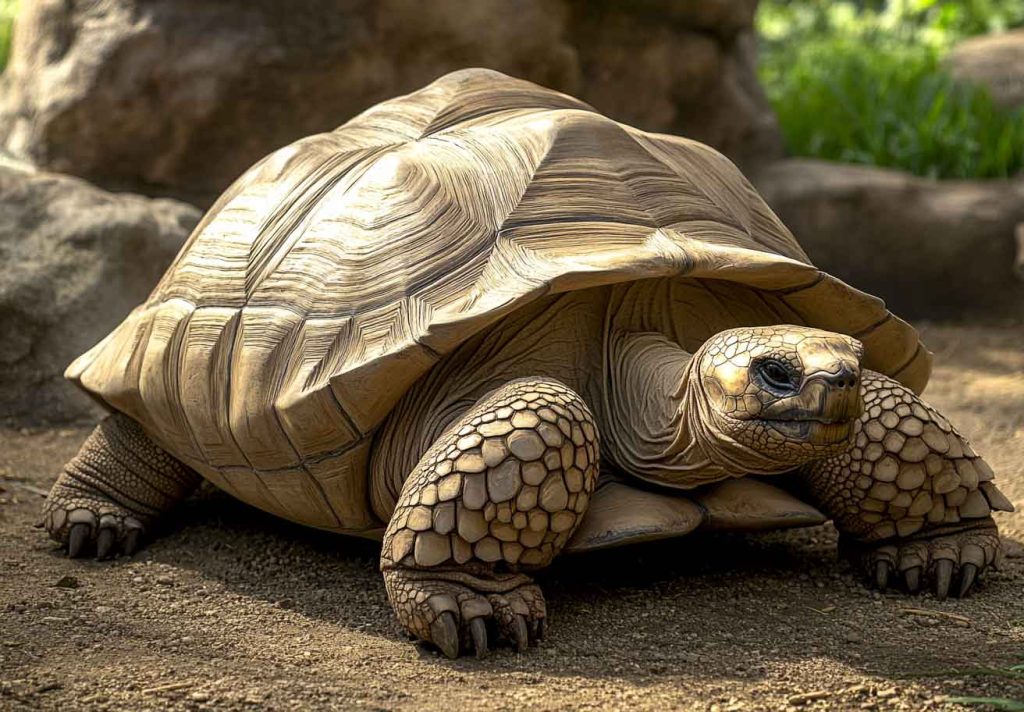
Can You Use Size to Estimate a Turtle’s Age?
Sometimes — but only if you know the species.
Each turtle grows at its own pace, and some species stay small while others become giants. That’s why using size alone without species context can lead you way off track.
For example:
- A red-eared slider might grow from hatchling to 5–7 inches in just 2–3 years if kept warm, well-fed, and under proper lighting.
- A box turtle, on the other hand, may only grow 1 inch per year, sometimes slower.
- A sulcata tortoise (which isn’t technically a turtle but is worth mentioning) can weigh over 50 lbs by age 5 under ideal conditions.
When I first got my painted turtle, I assumed he was “full-grown” at around 6 inches. But after comparing him to growth charts and chatting with a breeder, I found out he was only around 3 years old — just well-fed and living in perfect conditions.
To age your turtle by size:
- Identify the species — this is non-negotiable.
- Look up the average growth rate and adult size for that species.
- Consider growth conditions — was your turtle in captivity or wild? Warm or cold region? Fed daily or irregularly?
Captive turtles usually grow faster due to consistent food and warmth. So if yours is big but still has a glossy, new-looking shell, it might be younger than you think.
Wild vs. Captive Turtles: Why It Matters for Age Estimation
Over the years, I’ve realized that wild turtles age differently than captive ones — not just in behavior but in their physical appearance too. If you’ve found a turtle outside and you’re trying to estimate its age, there are some unique factors to keep in mind.
Wild Turtles:
- Grow more slowly because food and warmth aren’t always consistent.
- Often have rougher, more weathered shells from digging, hiding, and exposure to elements.
- Show smoother growth rings, or sometimes none at all in older individuals.
- May have scars, chips, or algae on their shells.
When I helped relocate an old female box turtle from a construction site, her shell looked like it had been through a war — faded color, chipped scutes, smooth as a river rock. A local herpetologist guessed she was over 30 years old, and based on her size and shell wear, I believed it.
Captive Turtles:
- Tend to grow faster, especially with steady heat and daily food.
- Keep their color and growth rings longer because there’s less abrasion.
- Often have cleaner shells — no scratches from the wild.
- Typically hit adult size earlier.
If you’re looking at a turtle with bright colors, clear scute lines, and smooth skin — odds are it’s either young or captive-raised.
Can Behavior Reveal a Turtle’s Age?
You might not think of turtles as expressive, but trust me — their behavior tells you a lot.
Here’s what I’ve noticed over the years:
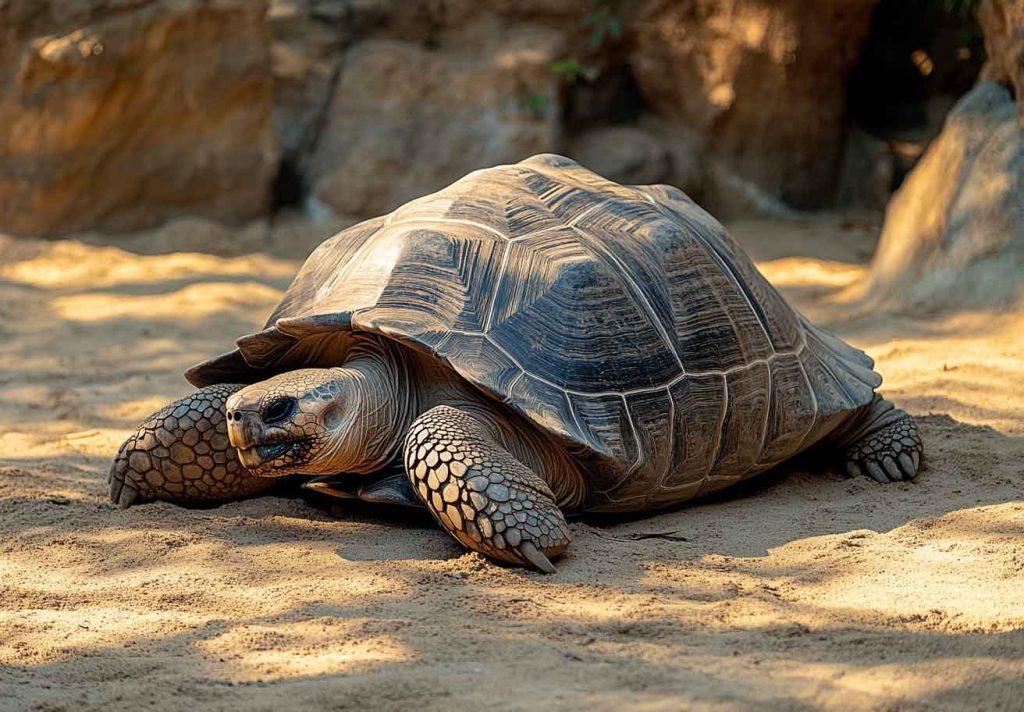
Younger Turtles:
- Are usually more active, exploring their environment constantly.
- Can be skittish or nervous around handling.
- Tend to eat more aggressively — especially during growth spurts.
- May spend more time swimming (for aquatic turtles) or pacing around.
I’ve raised a few sliders from hatchlings, and let me tell you — those early years were like living with tiny, curious tanks. Constant movement, endless begging for food, and always trying to escape their basking dock.
Older Turtles:
- Get calmer, more confident, and tend to stick to routines.
- Might bask more and move less often.
- Usually eat slower or more selectively.
- Become less reactive to human presence or new surroundings.
My older male turtle, probably around 15 years old now, barely reacts when I walk into the room. He just lounges on his dock like a little sun god. He still eats well and swims fine — but that youthful energy? Long gone.
While behavior alone won’t give you an exact age, it can give you a good general range — whether your turtle is still growing, hitting adulthood, or clearly entering those wise old years.
How Long Do Turtles Live?
If you’re trying to guess a turtle’s age, it helps to know how long they’re supposed to live. That way, you can at least figure out if yours is still young, middle-aged, or reaching their senior years.
Here’s what I’ve learned — and these are rough estimates based on ideal care:
| Species | Average Lifespan (Captive) |
|---|---|
| Red-Eared Slider | 25–40 years |
| Painted Turtle | 20–30 years |
| Box Turtle | 40–60 years (some 80+) |
| Russian Tortoise | 40–50 years |
| Sulcata Tortoise | 70–100 years |
| Common Snapping Turtle | 30–50 years |
Some turtles can even outlive their owners — especially tortoises. That’s why knowing your turtle’s age, or at least estimating it, can help you plan for long-term care.
Caring for Older Turtles
As turtles age, their needs don’t change drastically — but there are a few things I always pay closer attention to.
1. Joint Mobility and Movement
Older turtles may slow down a bit. Make sure basking ramps and platforms are easy to access, and don’t have steep angles or slippery surfaces.
2. Shell Health
Older turtles often develop smoother, duller shells. Keep an eye out for pitting, flaking, or fungus, especially in aquatic turtles. Gentle brushing and good water quality help a lot.
3. Appetite & Digestion
Just like with people, metabolism can slow down with age. Your turtle may not eat as much, or might prefer softer foods. Offer a balanced diet, but don’t panic if mealtimes become more chill.
4. Vet Checkups
A lot of people skip this, but yearly checkups with a reptile vet are a great idea — especially for senior turtles. X-rays, bloodwork, or just a physical exam can catch small issues before they become serious.
I’ve had to tweak a few things in my older turtle’s enclosure — lowering the basking dock, using finer substrate, and making sure he doesn’t need to swim far for food. It’s all about keeping him comfortable.
FAQ: Common Questions About Turtle Age
1. Can you use a turtle’s rings to count its age like a tree?
Kind of — but not accurately. Growth rings show how fast a turtle grew, not how many years it’s lived. Still, it’s a good starting point for young turtles.
2. What’s the most accurate way to tell a turtle’s age?
If you don’t have hatch records, there’s no exact way. Your best bet is to combine shell condition, size, species growth rate, and behavior to estimate a range.
3. Do turtles show signs of aging like humans?
Yes, but it’s subtle. Older turtles may slow down, eat less, and have smoother, duller shells. They might also spend more time basking or resting.
4. Can a turtle live longer in captivity or in the wild?
In general, turtles live longer in captivity — as long as they get proper care. No predators, consistent food, clean water, and warmth really extend their life.
5. Is it possible for a turtle to live over 100 years?
Yes, especially in tortoise species. Some Galápagos and sulcata tortoises are known to live over a century.
Final Words
Turtles are long-lived, mysterious creatures — and aging one is more of an art than a science. If you don’t know your turtle’s hatch date, that’s okay. By learning their species, observing their behavior, and watching for physical signs, you can still get a pretty solid idea of their life stage.
The more time you spend with your turtle, the more you’ll recognize their rhythms — whether they’re a curious little juvenile or a calm, slow-moving elder. And honestly, that bond only gets better with time.
Thanks for reading, and feel free to check out my other turtle care guides if you’re looking to build the best life for your shelled friend.



